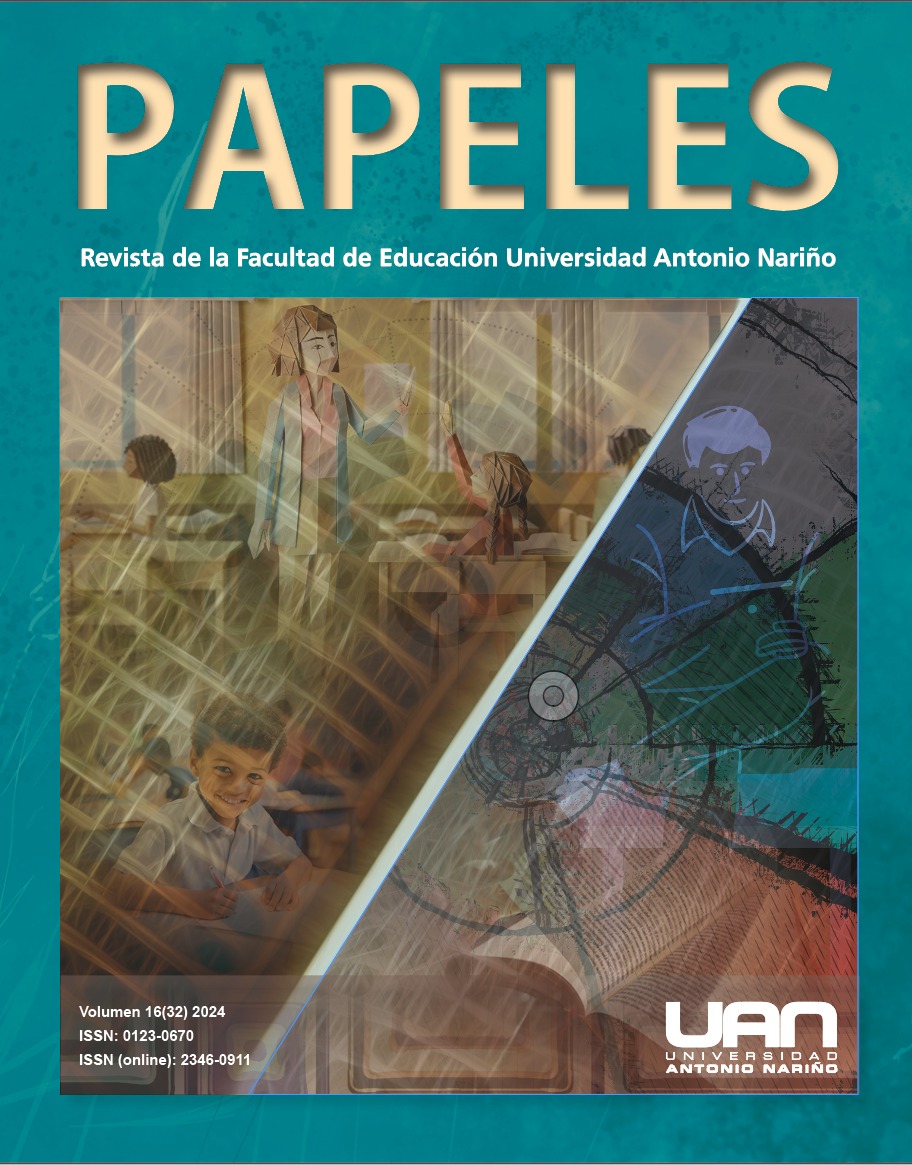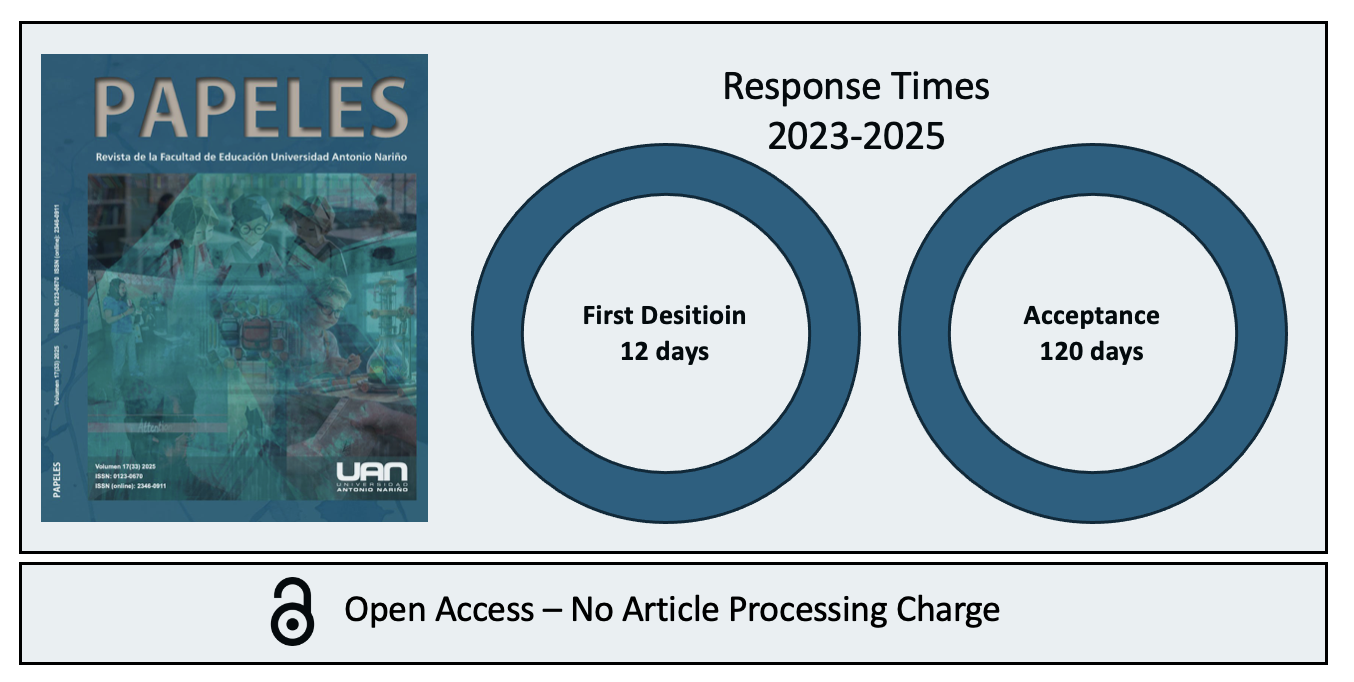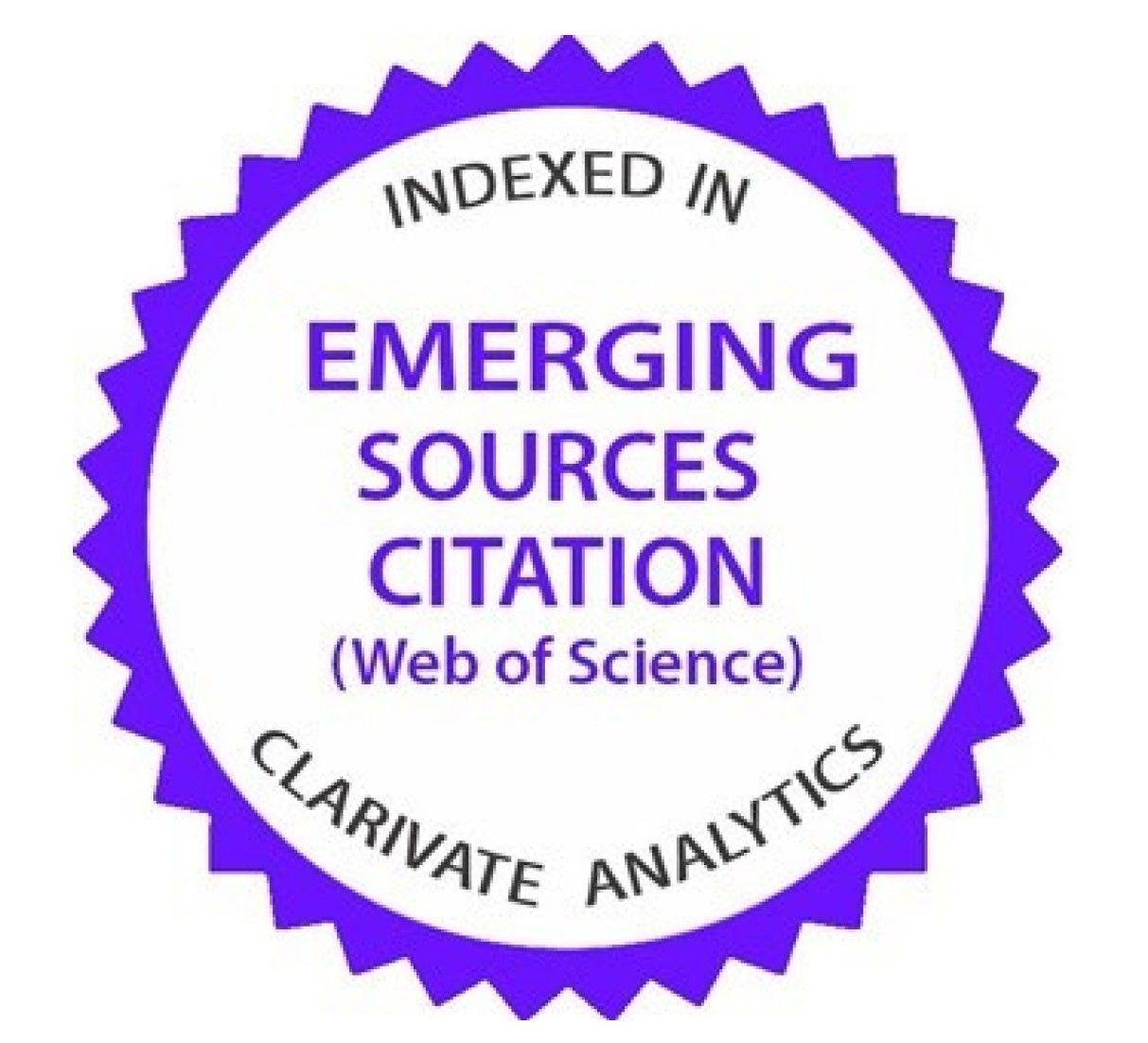Chemistry Learning through Contextualized Pharmaceutical Examples: Syrups and Tablets
Aprendizaje de la química a través de ejemplos farmacéuticos contextualizados: jarabes y tabletas
DOI:
https://doi.org/10.54104/papeles.v16n32.1861Keywords:
Scientific education, learning strategies, Chemistry, teaching in context, knowledge integrationAbstract
Introduction: Is it possible to improve chemistry learning in university students by implementing knowledge integration materials with contextualized examples of medications? A large part of the theoretical content included in the General Chemistry syllabus can be addressed through contextualized examples. This promotes student involvement and interest in chemical-pharmaceutical concepts. Methodology: This is a mixed study in which educational materials are designed and implemented that incorporate the topics of solutions and acid-base chemical balance with contextualized examples of drugs and medications. The evaluation instruments consisted of questionnaires with open and closed questions with which ideas, concepts and procedures were collected from the students. Results and discussion: The learning results show that for Dilutions and Solutions there is an increase from 70 to 90% in the understanding of the theoretical concepts, but in related exercises the students present generalized difficulty. For the concepts related to Acid-Base Chemical Equilibrium, progress in understanding was evident with a 15% increase in where students identified the ionized species. Conclusions: As evidence of this research work, the use of contextualized examples allows adaptation to diverse educational environments since the specific needs of students are evident. This teaching suggestion illustrates how the use of contextually adapted exercises, such as those related to medications, can enrich the teaching of chemistry.
Downloads
References
Bransford, J. D., Brown, A. L. y Cocking, R. R. (1999). How people learn: Brain, mind, experience, and school. National Academy Press.
Brown, T. L., LeMay, H. E., Bursten, B. E. y Burdge, J. R. (2014). Química: La ciencia central. Pearson.
Chang, R. y Goldsby, K. (2017). Química (12.ª ed.). McGraw-Hill.
Crawford, B. A. (2000). Embracing the essence of inquiry: New roles for science teachers. Journal of Research in Science Teaching: The Official Journal of the National Association for Research in Science Teaching, 37(9), 916-937. https://doi.org/10.1002/1098-2736(200011)37:9%3C916::AID-TEA4%3E3.0.CO;2-2 DOI: https://doi.org/10.1002/1098-2736(200011)37:9<916::AID-TEA4>3.0.CO;2-2
Davidsson, E. y Granklint-Enochson, P. (2021). Teachers’ way of contextualizing the science content in lesson introductions. Science Education International, 32(1), 46-54. https://doi.org/10.33828/sei.v32.i1.5 DOI: https://doi.org/10.33828/sei.v32.i1.5
Garin, R., Reyes, R., Domantay, G. y Rosals, J. (2021). Contextualized and localized teaching as a technique in teaching basic statistics. Asia Pacific Journal of Education, Arts and Sciences, 4(1), 62-67. https://apjeas.apjmr.com/wp-content/uploads/2017/05/APJEAS-2017.4.1.2.08.pdf
Hamui-Sutton, A. (2013). Un acercamiento a los métodos mixtos de investigación en educación médica. Investigación en Educación Médica, 2(8), 211-216. https://www.elsevier.es/es-revista-investigacion-educacion-medica-343-pdf-S2007505713727145 DOI: https://doi.org/10.1016/S2007-5057(13)72714-5
Kind, V. (2004). Más allá de las apariencias: Ideas previas de los estudiantes sobre conceptos básicos de química. Santillana. http://www.joseantoniochamizo.com/proyectos/mm/pdf/archivo/001_Alla_apariencias.pdf
Levy, F. y Murnane, R. J. (2004). The new division of labor: How computers are creating the next job market. Princeton University Press. DOI: https://doi.org/10.1515/9781400845927
Maskill, R. y Cachapuz, A. F. (1989). Learning about the chemistry topic of equilibrium: The use of word association tests to detect developing conceptualizations. International Journal of Science Education, 11(1), 57-69. https://doi.org/10.1080/0950069890110106 DOI: https://doi.org/10.1080/0950069890110106
Meroni, G., Copello, M. I. y Paredes, J. (2015). Enseñar química en contexto: Una dimensión de la innovación didáctica en educación secundaria. Educación Química, 26(4), 275-280. https://doi.org/10.1016/j.eq.2015.07.002 DOI: https://doi.org/10.1016/j.eq.2015.07.002
Molina, M. F. (2018). Uso de kits experimentales para mejorar las actitudes y bajar la repitencia en química general. Entre Ciencia e Ingeniería, 12(24), 89-95. http://dx.doi.org/10.31908/19098367.3817 DOI: https://doi.org/10.31908/19098367.3817
Moraga Toledo, S., Espinet Blanch, M. y Merino Rubilar, C. (2019). El contexto en la enseñanza de la química: Análisis de secuencias de enseñanza y aprendizaje diseñadas por profesores de ciencias de secundaria en formación inicial. Revista Eureka sobre Enseñanza y Divulgación de las Ciencias, 16(1), 1604. http://dx.doi.org/10.25267/Rev_Eureka_ensen_divulg_cienc.2019.v16.i1.1604 DOI: https://doi.org/10.25267/Rev_Eureka_ensen_divulg_cienc.2019.v16.i1.1604
Orlich, D. C., Harder, R. J., Callahan, R. C., Trevisan, M. S. y Brown, A. H. (2010). Teaching strategies: A guide to effective instruction. Cengage Learning.
Quílez, J. y Quílez-Díaz, A. (2016). Clasificación y análisis de los problemas terminológicos asociados con el aprendizaje de la química: Obstáculos a superar. Revista Eureka sobre Enseñanza y Divulgación de las Ciencias, 13(1), 20-35. http://dx.doi.org/10.25267/Rev_Eureka_ensen_divulg_cienc.2016.v13.i1.03 DOI: https://doi.org/10.25267/Rev_Eureka_ensen_divulg_cienc.2016.v13.i1.03
Raviolo, A. y Martínez Aznar, M. (2005). El origen de las dificultades y de las concepciones alternativas de los alumnos en relación con el equilibrio químico. Educación Química, 16(4e), 159-166. https://doi.org/10.22201/fq.18708404e.2005.4e.66080 DOI: https://doi.org/10.22201/fq.18708404e.2005.4e.66080
Rodamilans, M., Cambras, T., Gómez-Catalan, J., Mitjans, M., Llobet, J., Moreno, J., Teixidó, E., Vinardell, M., Barenys, M. y Diez, A. (2010). La coordinación entre profesores de fisiología y toxicología: Un caso práctico en la Facultad de Farmacia de la Universidad de Barcelona. ARS Pharmaceutica, 51(2), 45-52. https://digibug.ugr.es/bitstream/handle/10481/27366/Ars%20Pharm%202010%3b51%28Suppl2%2945-52.pdf?sequence=1&isAllowed=y
Sánchez Mendiola, M. y Martínez González, A. (eds.) (2020). Evaluación del y para el aprendizaje: Instrumentos y estrategias. Universidad Nacional Autónoma de México.
Talanquer, V. (2006). Commonsense chemistry: A model for understanding students’ alternative conceptions. Journal of Chemical Education, 83(5), 811-816. https://doi.org/10.1021/ed083p811 DOI: https://doi.org/10.1021/ed083p811
Tshojay, P. y Giri, N. (2021). Contextualized approach in teaching chemistry: The perspectives and practices of teachers and students. International Journal of Applied Chemical and Biological Sciences, 2(4), 78-91. https://visnav.in/ijacbs/wp-content/uploads/sites/3/2021/08/Contextualized-approach-in-teaching-Chemistry-The-perspectives-and-practices-of-teachers-and-students.pdf
Túnez Fiñana, I., Galván Cejudo, A. y Fernández Reyes, E. (2001). pH y amortiguadores: Tampones fisiológicos. Amortiguadoras, 3, 1-11.
Universidad Nacional Autónoma de México, Facultad de Química. (2024). Licenciatura Química Farmacéutico Biológica. https://quimica.unam.mx/ensenanza/licenciaturas/quimica-farmaceutico-biologica/
Wierdsma, M., Boersma, K. T., Knippels, M. C. y Van Oers, B. (2016). Developing the ability to recontextualise cellular respiration: An explorative study in recontextualising biological concepts. International Journal of Science Education, 38(15), 2388-2413. http://dx.doi.org/10.1080/09500693.2016.1246779 DOI: https://doi.org/10.1080/09500693.2016.1246779
Downloads
Published
-
Abstract775
-
PDF (Español)156
-
LENS (Español)52
-
XML (Español)20
How to Cite
Issue
Section
Categories
License
Copyright (c) 2024 Flor de María Reyes-Cárdenas, Patricia Alejandrina Lechuga-Uribe, Vania Alejandra Sánchez-Roa

This work is licensed under a Creative Commons Attribution-NoDerivatives 4.0 International License.






